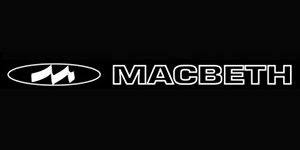
On the market of analog instruments, the Scotsman Ken Macbeth seems to be one of the most amazing or even bizarre creators. The price tag for his works is often shocking, but a tempting unattainable level of quality confirms that Ken doesn’t compromise - he cares only about the technical superiority that he achieves at all costs. M5 has already conquered the fans of modular synthesis. Ken likes to develop and is easily carried away by new ideas and projects, so each of his instruments is being shipped only for a limited time and in a limited series, so you should hurry if you are one of the modular synthesis fans and even more – a fan of Macbeth's products.
In addition to the line of first-class modules, which are sure to lure a professional musician, Macbeth Studio Systems has marked its history with two truly high-profile releases. We talk, of course, about the impressive M5 and the charming invention called Elements.
M5 can remind you of ARP 2600, but do not rush to conclusions, even if comparing seems much more fun than distinguishing. M5 is a modern analog semi-modular synthesizer offering an impressive variety of analogue controls that manage sound in real time mode - just analogue, nothing digital, everything you do with the signal is in the spirit of good old classics: patching and knob tweaking. And, of course, no MIDI, USB, memory and other delights of our exacting time. However, principled Ken still reserves your right to use the MIDI-CV converter to connect a MIDI keyboard.
The control panel features some graphic hints pointing to those zones, the configuration of which was pre-planned – some possible connections are already patched by the creator, but he made sure that the musician doesn’t get bored with his own idleness. The instrument operates on three oscillators (sinus, triangular, sawtooth and square waveforms), allowing a wide range of tuning and even micro tuning options. There’s also a pink and white noise generator supporting Slow Random mode. An external audio source can be routed through the audio preamp input.
There are two discrete filters onboard: 24db low-frequency ladder one, as well as 12db low-frequency, bandpass, high-frequency and notch types - both support self-oscillation and have dedicated ADSR envelope generators. Both LFOs with their own rate control, output and trigger output (as well as sample&hold - LFO2) generate ramp (rising ramp/falling ramp), triangular and rectangular waveforms. The modular synthesizer includes 4 analog amplifiers: one for each of the two filters and two more for the panning circuit/stereo output. There is also a ring modulator, spring reverb, two audio mixers that allow you to control the level of oscillators passing through the filter, and two CV mixers that also work with filters, allowing different sources to affect the timbre of the type of filter used.
M5 can compete with ARP 2600 not only in high ratings, but also in a rarity aspect - despite the fact that Macbeth instrument is a few decades younger, it's much easier to find ARP on sale than a rare unit of M5.
According to Ken, the Elements concept became a challenge in some way. Completely independent, full-featured and full-sized synthesizer offers the qualities and components that are so adored by Macbeth himself: voltage-controlled filter, the whims typical to saw generating oscillators, turning the wave into a triangle and a sine, trimmers that allow to preset peculiar glitch, or rather a signal spike. The diode ladder filter was the result of a number of experiments that led to the desired absence of distortion at certain resonance levels.
Three VCOs (+ one modulating oscillator with temperature compensation), noise generator, cross modulation, synchronization, experimental filter and brisk envelope generators provide a juicy and, which is the most important, harmonious sound. Besides, the device has integrated a high-quality keyboard with touch panels instead of keys. You can also use the ring modulator, spring reverb, ultrabender (dynamic pitch band, master tuning, global portamento effect).
Elements is based on the Element one – EMS-like synth with a filter taken from Roland Series 100. Element one differs from Elements first of all in the number of oscillators sporting only two of them.
It’s worth mentioning such significant inventions manufactured by Macbeth, as Micromac-R, a 3-oscillator synthesizer, a prototype synth engine Photon, and also a number of filters, envelope modules and generators.

